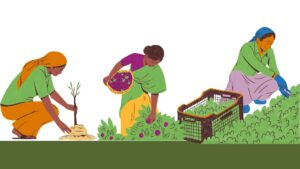Excerpt from Making India Work: The Development of Welfare in a Multi-level Democracy By Louise Tillin, published in 2025 by Cambridge University Press, United Kingdom.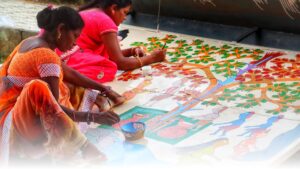
The struggles of workers, employers, and the state to construct welfare regimes that reduce the dependency of workers on the extremes of market forces while sustaining the legitimacy of capitalist enterprise have been central to political and economic projects across the world. The story of European history gave rise to the notion that the construction of a welfare state followed sequentially from industrial development, which led to the political organisation of workers and was strengthened by the forces unleashed by subsequent democratisation. Yet, this sequentialist understanding was deeply rooted in a particular kind of European experience. It offers a weak guide to interpreting the evolution of welfare regimes in the parts of the world where substantial social policy innovation has taken place in recent decades: Asia, Africa, and Latin America.
Many countries in these regions adopted social policy commitments – of different depths and design – simultaneously with processes of economic development and democratisation. While international organisations and financial institutions have played an important role in influencing the poverty reduction strategies of developing countries, there is no clear convergence of welfare regime types among the world’s lower- and middle-income countries today. This is not simply because resource shortages or the pre-eminence of clientelism have constrained the development of coherent welfare regimes in most developing countries. Rather, there are distinctive patterns evident in the policies and priorities pursued by different countries. This increases the need to understand the longer-term historical patterns that have shaped welfare regimes in developing countries and which continue to influence their choices for the future.
 India’s overall public expenditure on the social sector remains low in comparative terms, and the shortcomings of its welfare regime are widely acknowledged, but its pattern is also distinctive. In some ways, India’s welfare regime has been precocious. India introduced contributory sickness insurance for industrial workers in 1948 at a time when other large federations with advanced industrial economies, such as Canada and the United States, were struggling to negotiate nationwide social security provisions. India was also unique among later industrialisers in introducing social insurance for industrial workers in a situation of labour abundance at an early stage of industrial development and before the advent of mass democracy. That India did so, and without being able to agree a public policy to handle cyclical unemployment, helped to create the truncated and heavily protected formal sector labour market that exists to the present to the ire of generations of reformers.
India’s overall public expenditure on the social sector remains low in comparative terms, and the shortcomings of its welfare regime are widely acknowledged, but its pattern is also distinctive. In some ways, India’s welfare regime has been precocious. India introduced contributory sickness insurance for industrial workers in 1948 at a time when other large federations with advanced industrial economies, such as Canada and the United States, were struggling to negotiate nationwide social security provisions. India was also unique among later industrialisers in introducing social insurance for industrial workers in a situation of labour abundance at an early stage of industrial development and before the advent of mass democracy. That India did so, and without being able to agree a public policy to handle cyclical unemployment, helped to create the truncated and heavily protected formal sector labour market that exists to the present to the ire of generations of reformers. In a later period, India, unlike many other low- and middle-income countries, maintained policies of rural food subsidies and rural public works programmes through the period of structural adjustment in the 1990s and expanded them afterwards. India stands out among lower- and middle-income countries for the pre-eminence of rural employment generation as the lynchpin of its social policy framework. Conversely, compared to other developing countries, India was slower to embrace cash transfers – with policymakers and political elites from the country’s first prime minister Jawaharlal Nehru onwards evincing a deep suspicion of anything that could be conceived as a ‘dole’. It is only in the relatively recent past, since 2014, under the Narendra Modi-led Bharatiya Janata Party (BJP) central government, that India has turned more heavily towards cash transfer programmes alongside the fulsome embrace of digital governance and biometric identification. In other ways, India has been far from precocious in its approach to social policy. Notably, it continues to spend markedly less on public health and education than other comparable countries. This book examines how India’s unique story of democratisation, in simultaneity with economic development, has produced this distinctive pattern.
In a later period, India, unlike many other low- and middle-income countries, maintained policies of rural food subsidies and rural public works programmes through the period of structural adjustment in the 1990s and expanded them afterwards. India stands out among lower- and middle-income countries for the pre-eminence of rural employment generation as the lynchpin of its social policy framework. Conversely, compared to other developing countries, India was slower to embrace cash transfers – with policymakers and political elites from the country’s first prime minister Jawaharlal Nehru onwards evincing a deep suspicion of anything that could be conceived as a ‘dole’. It is only in the relatively recent past, since 2014, under the Narendra Modi-led Bharatiya Janata Party (BJP) central government, that India has turned more heavily towards cash transfer programmes alongside the fulsome embrace of digital governance and biometric identification. In other ways, India has been far from precocious in its approach to social policy. Notably, it continues to spend markedly less on public health and education than other comparable countries. This book examines how India’s unique story of democratisation, in simultaneity with economic development, has produced this distinctive pattern.
The contours of the policy architecture that India has constructed to protect against the social and economic contingencies of capitalist development were laid bare in the early months of the coronavirus pandemic. As the central government scrambled haltingly to respond to the social dislocation generated by a sudden lockdown in March 2020, it fell back on an existing framework for social security and articulated this as an interrelated policy architecture with unusual clarity. The Pradhan Mantri Garib Kalyan package pledged additional support for the provision of food grains via the Public Distribution System (PDS), wage increases under the Mahatma Gandhi National Rural Employment Guarantee Act (MGNREGA), relaxation of provident fund rules to enable cash withdrawals by organised sector workers, and directives to state governments to support construction workers via their welfare fund, in addition to a number of cash transfers via schemes for farmers, pensioners, and women. These measures, announced Finance Minister Nirmala Sitharaman, were intended to reach the ‘poorest of the poor, with food and money in hands, so that they do not face difficulties in buying essential supplies and meeting essential needs’.
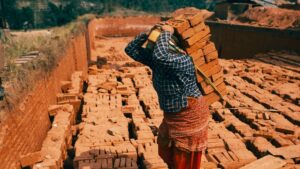 This extraordinary moment of sudden and exogenous shock to the operation of economic and social life provided an unusual window to view in the round the rudimentary design of India’s welfare regime and the policy levers that were open to the central government in a moment of crisis. The enumeration of schemes for organised sector workers, for rural areas (cash support for farmers and MGNREGA for workers), and for unorganised sector workers, in addition to food subsidies and a limited number of direct cash transfer programmes, revealed – in a nutshell – the course of social policy development over the twentieth and twenty-first centuries in India.
This extraordinary moment of sudden and exogenous shock to the operation of economic and social life provided an unusual window to view in the round the rudimentary design of India’s welfare regime and the policy levers that were open to the central government in a moment of crisis. The enumeration of schemes for organised sector workers, for rural areas (cash support for farmers and MGNREGA for workers), and for unorganised sector workers, in addition to food subsidies and a limited number of direct cash transfer programmes, revealed – in a nutshell – the course of social policy development over the twentieth and twenty-first centuries in India.
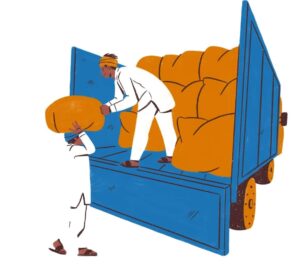 The impetus for this book emerged as India began to expand social welfare provision in a phase of rapid economic growth under the Congress Party-led United Progressive Alliance (UPA) government, 2004–14. As writing about the politics of welfare grew during this period, especially with the turn towards a rights-based conception of social policy enshrined in legislation and encouraged by the Supreme Court, it became clear that there was a very limited literature on the longer history of social policy in India. The story at an all- India level had been relegated to the margins of large bodies of work on India’s political economy, democracy, or citizenship. There has been growing interest in understanding the spread and consolidation of welfare state regimes outside Europe and North America, yet most of this literature has focused on Latin America or East Asia. India – for all of its significance in scale and contributions to development theory – has not been so closely theorised as a distinctive welfare regime in its own right.
The impetus for this book emerged as India began to expand social welfare provision in a phase of rapid economic growth under the Congress Party-led United Progressive Alliance (UPA) government, 2004–14. As writing about the politics of welfare grew during this period, especially with the turn towards a rights-based conception of social policy enshrined in legislation and encouraged by the Supreme Court, it became clear that there was a very limited literature on the longer history of social policy in India. The story at an all- India level had been relegated to the margins of large bodies of work on India’s political economy, democracy, or citizenship. There has been growing interest in understanding the spread and consolidation of welfare state regimes outside Europe and North America, yet most of this literature has focused on Latin America or East Asia. India – for all of its significance in scale and contributions to development theory – has not been so closely theorised as a distinctive welfare regime in its own right.
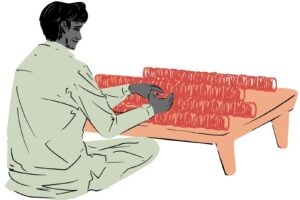 There are a number of reasons for this neglect. The placing of social and economic rights in the Directive Principles of the Indian Constitution, as opposed to the Fundamental Rights chapter, has been interpreted as a downgrading of the welfare component of citizenship in a founding moment. The interests of the Constitution’s architects, principally Dr B. R. Ambedkar, in addressing social inequality have been read primarily through the lens of political democracy and caste-based affirmative action and their limitations. Most accounts of India’s political economy after independence from colonial rule in 1947 share an assumption that welfare state development could only proceed after industrial development. Social policy simply does not feature in classic accounts of India’s political economy.
There are a number of reasons for this neglect. The placing of social and economic rights in the Directive Principles of the Indian Constitution, as opposed to the Fundamental Rights chapter, has been interpreted as a downgrading of the welfare component of citizenship in a founding moment. The interests of the Constitution’s architects, principally Dr B. R. Ambedkar, in addressing social inequality have been read primarily through the lens of political democracy and caste-based affirmative action and their limitations. Most accounts of India’s political economy after independence from colonial rule in 1947 share an assumption that welfare state development could only proceed after industrial development. Social policy simply does not feature in classic accounts of India’s political economy.  The dominant intuition, reflected in the literature on developing countries more broadly, is that it is difficult to discern a purposive approach to social policy in India historically, either because a want of resources has constrained the development of a ‘welfare state’, or because of the pre-eminence of patronage, which has distorted those policies that have been introduced. Moreover, the state’s role has been seen as marginal and ‘individual security . . . tended to depend greatly on support from groups such as the extended family or the community’. One of the most thorough exercises in creating a comparative classification of welfare regimes in developing countries thus categorised India as an ‘informal security regime’. Alternatively, the notion of India as a ‘patronage democracy’ has focused attention on the discretionary distribution of public resources as a political strategy, in which ‘dominant proprietary classes’ captured public resources at the expense of the achievement of longer-term development goals.
The dominant intuition, reflected in the literature on developing countries more broadly, is that it is difficult to discern a purposive approach to social policy in India historically, either because a want of resources has constrained the development of a ‘welfare state’, or because of the pre-eminence of patronage, which has distorted those policies that have been introduced. Moreover, the state’s role has been seen as marginal and ‘individual security . . . tended to depend greatly on support from groups such as the extended family or the community’. One of the most thorough exercises in creating a comparative classification of welfare regimes in developing countries thus categorised India as an ‘informal security regime’. Alternatively, the notion of India as a ‘patronage democracy’ has focused attention on the discretionary distribution of public resources as a political strategy, in which ‘dominant proprietary classes’ captured public resources at the expense of the achievement of longer-term development goals.
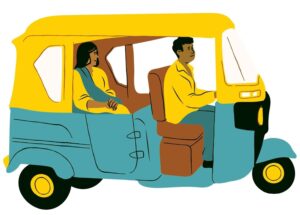 For these reasons, the development of India’s (albeit constrained) structure of social policy has historically become either a footnote to other stories or a list of schemes or subsidies whose coherence or interlinkages are seldom examined. Despite important individual studies of the history of individual initiatives such as rural employment guarantee programmes or the PDS,these remain standalone analyses. While rich seams of scholarship have been produced on pockets of exceptionalism in human development, this literature has focused on explaining why some regions have had greater success in reducing poverty. It has examined, in particular, the record of left-wing regional governments in Kerala and (historically) West Bengal. Furthermore, the more recent literature on the politics of rights-based social policy under the UPA has focused on the period since 2004, with only limited attempts to place post-2004 developments in historical perspective.
For these reasons, the development of India’s (albeit constrained) structure of social policy has historically become either a footnote to other stories or a list of schemes or subsidies whose coherence or interlinkages are seldom examined. Despite important individual studies of the history of individual initiatives such as rural employment guarantee programmes or the PDS,these remain standalone analyses. While rich seams of scholarship have been produced on pockets of exceptionalism in human development, this literature has focused on explaining why some regions have had greater success in reducing poverty. It has examined, in particular, the record of left-wing regional governments in Kerala and (historically) West Bengal. Furthermore, the more recent literature on the politics of rights-based social policy under the UPA has focused on the period since 2004, with only limited attempts to place post-2004 developments in historical perspective.
(This excerpt is reproduced with permission of the Licensor through PLSclear. Louise Tillin is Professor of Politics in the King’s India Institute, King’s College London. We are grateful to Professor Tillin and Cambridge University Press, United Kingdom for granting permission to publish this excerpt. Making India Work: The Development of Welfare in a Multi-level Democracy is available for purchase in India online.)


